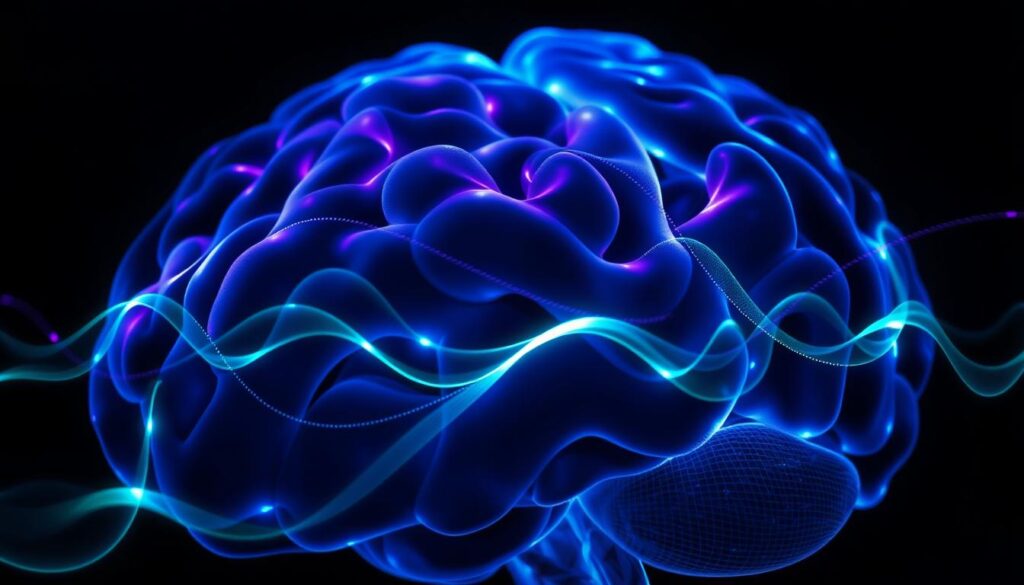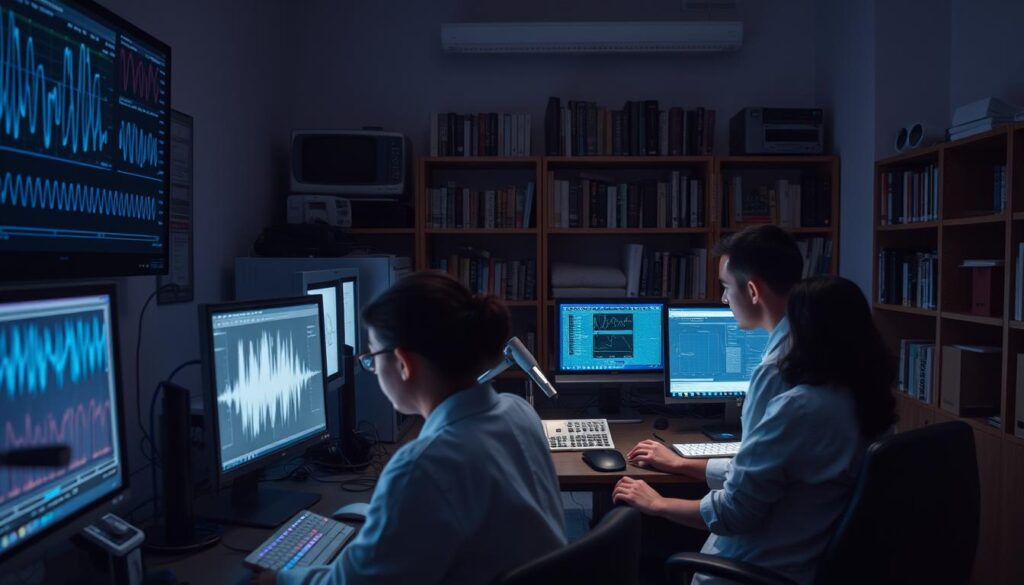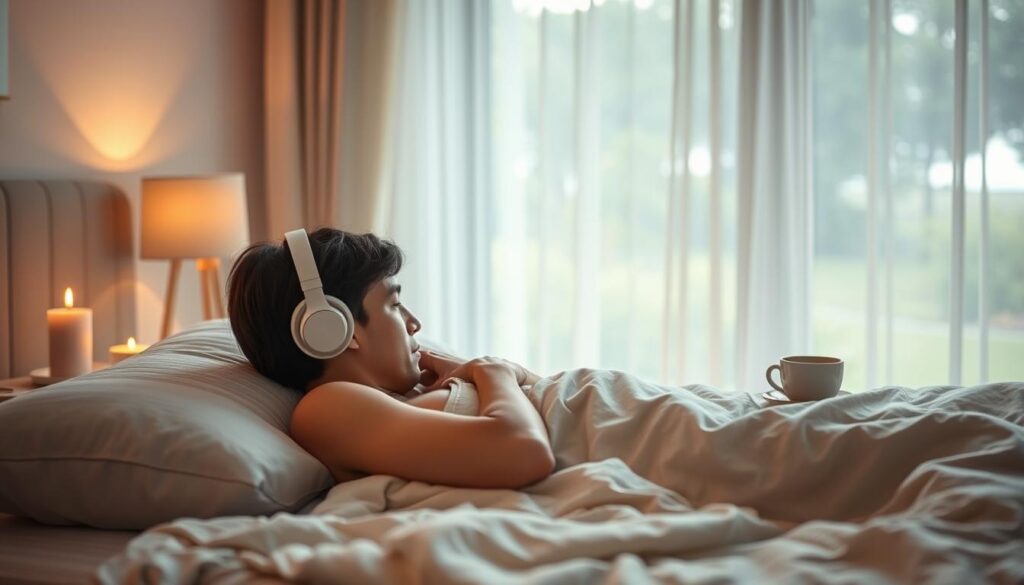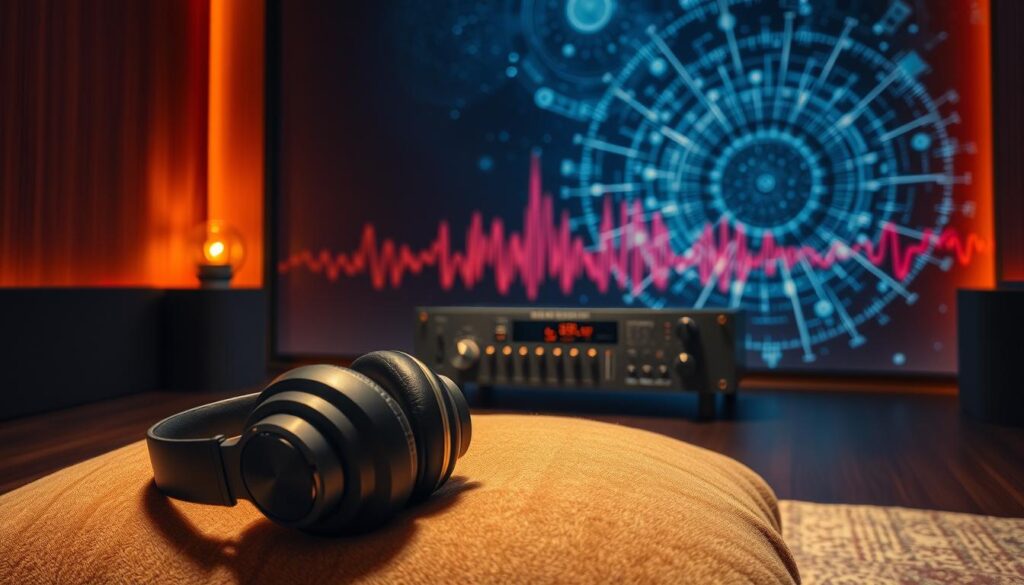Many people search for natural ways to improve their nightly rest. They want to find calm after a busy day. This search often leads them to explore the power of sound.
This technique involves a fascinating auditory illusion. The mind perceives a third, steady pulse when it hears two slightly different tones, one in each ear. This perceived rhythm is the core of the process.
Researchers believe this auditory stimulus can influence brain activity. It may encourage the mind to shift into a more relaxed state. This shift is key for winding down at night.
The method offers a non-invasive approach to wellness. It does not rely on any medication. Instead, it uses specific audio frequencies to potentially guide the brain toward tranquility.
For those with a restless mind, this form of sound therapy can be particularly helpful. It might quiet racing thoughts and ease tension. This creates a peaceful mental environment perfect for drifting off.
While science continues to investigate, many users report positive effects. They experience a greater sense of calm and find it easier to fall asleep. This makes it a popular tool for enhancing rest.
Understanding the Phenomenon of Binaural Beats Sleep
Sound processing in the brain can lead to unexpected perceptual experiences through specific conditions. This phenomenon occurs when the auditory system receives carefully arranged inputs.
What Are Binaural Beats?
These auditory illusions are not actual external sounds. Instead, they represent a fascinating creation of the mind’s processing mechanisms.
When headphones deliver two different frequencies separately—one to each ear—the brain perceives a third tone. This internal generation happens through complex neurological integration.
How Two Frequencies Create a New Tone
The mathematical relationship is straightforward. The perceived beat equals the difference between the two frequencies presented to each ear.
For example, a 300 Hz tone in one ear combined with 310 Hz in the other creates a 10 Hz beat. This occurs through the brain’s sound localization centers.
Effective creation requires specific parameters. Each tone must be below 1000 Hz with a difference less than 35 Hz. Both ears must receive sound simultaneously through headphones.
Removing sound from one ear eliminates the effect entirely. This demonstrates the requirement for bilateral auditory input.
Science Behind Brain Waves and Sleep

Neurological research has identified specific brainwave frequencies that align with various mental and sleep states. These electrical patterns reveal how our minds transition between different consciousness levels.
Brainwave Patterns: Gamma, Beta, Alpha, Theta, and Delta
The brain produces five primary types of electrical activity. Each pattern corresponds to distinct mental states and functions.
Gamma waves (30-50 Hz) represent the highest frequency brain activity. They occur during peak concentration and complex problem-solving tasks.
Beta waves (13-30 Hz) dominate our waking hours. This pattern supports active thinking and focused task performance.
Alpha waves (8-13 Hz) emerge during relaxed yet alert states. They’re associated with meditation and creative thinking.
Theta waves (4-8 Hz) appear during light sleep and deep relaxation. This pattern facilitates meditative states and drowsiness.
Delta waves (under 4 Hz) characterize deep, restorative sleep. They’re crucial for physical recovery and memory consolidation.
Entrainment: How Sound Influences Brain Activity
Brainwave entrainment describes how external stimuli can synchronize neural activity. Consistent auditory input at specific frequencies guides the brain toward matching states.
This process essentially “tunes” the brain’s electrical patterns. It helps shift consciousness from alertness toward relaxation and sleep.
The phenomenon demonstrates how targeted frequency exposure can alter mental states. This forms the scientific basis for auditory relaxation techniques.
How to Use Binaural Beats Sleep for Deep Relaxation

Effective use of audio frequency therapy depends on creating optimal listening conditions. Proper setup ensures the brain receives the intended auditory signals correctly.
Setting Up Your Listening Environment
Headphones are essential for this technique. They deliver separate frequencies to each ear. Comfortable earbuds or over-ear models both work well.
The listening space should be quiet and free from interruptions. Proper placement ensures sound reaches both ears simultaneously. Losing audio in one ear prevents the desired effect.
Choosing the Right Frequencies for Rest
Select tracks specifically designed for relaxation purposes. Theta and delta ranges are most effective for promoting drowsiness.
Many recordings include ambient background sounds. White noise or gentle nature sounds can enhance the experience. These additional elements make listening binaural beats more pleasant.
Track length varies from 30 to 60 minutes. Experimentation helps determine what works best for individual needs. Volume should be comfortable but clearly audible.
Integrating Binaural Beats into Your Nightly Sleep Routine

Creating predictable patterns before bed helps signal the brain that it’s time to prepare for restorative sleep. This conditioning process makes falling asleep more natural over time.
Creating a Consistent Pre-Sleep Ritual
Establish a regular schedule where audio therapy becomes part of your wind-down process. Begin listening 30-60 minutes before your target bedtime.
Combine this practice with other relaxation techniques. Dim the lights and reduce screen exposure. These multi-sensory cues create a powerful sleep association.
The consistency trains your mind to recognize the audio as a transition signal. This helps shift from active thinking to a relaxed state.
Mixing Beats with Ambient Sounds
Many people find pure frequency tracks challenging at first. Blending them with gentle background music or nature sounds can enhance the experience.
Rainfall, ocean waves, or white noise work well with the auditory illusion. These additional elements mask disruptive environmental noises.
This combination creates a more pleasant listening environment. It helps prevent frustration while allowing the frequency entrainment to work effectively.
Adjust volume and track selection until you find what feels genuinely relaxing. The goal is natural drowsiness leading to peaceful rest.
Evidence and Research Supporting Binaural Beats Sleep

A body of clinical research is building a case for how specific sound patterns can influence restorative states. This evidence explores both neurological changes and reported user experiences.
Key Studies on Brain Wave Alteration and Sleep Improvement
One important study found that a 3 Hz delta-frequency stimulus successfully induced corresponding brain wave activity. This led to a longer duration of stage three rest, which is critical for physical restoration.
Research involving athletes demonstrated real-world benefits. Participants reported improved quality of rest, less daytime sleepiness, and easier waking.
Hormonal evidence is also compelling. Another investigation showed this auditory method can help sleep better by positively affecting key hormones. It increased DHEA and melatonin levels while reducing cortisol in a majority of participants.
User Experience Variations and Expert Insights
The therapy also appears to help sleep better by reducing anxiety. Studies on pre-surgical patients noted significant anxiety reduction, which indirectly supports restfulness.
Some research even points to pain-reduction benefits. Since pain frequently disrupts rest, this finding is highly relevant for improving sleep.
Experts caution that individual differences mean results can vary. While the science is promising, more research is needed to understand how binaural beats work best for different people.
Practical Tips for Optimizing Sleep with Sound Therapy

Getting the most from auditory relaxation methods requires attention to safety and personal comfort. A mindful approach ensures the experience is both effective and pleasant.
Small adjustments can make a significant difference in achieving restful nights. This guidance helps users fine-tune their practice for the best results.
Volume, Duration, and Safety Considerations
Protecting hearing health is the top priority. Long-term exposure to sound at 85 decibels or higher can cause permanent damage.
Keep the volume at a comfortable, moderate level. It should be well below the intensity of a loud concert or motorcycle.
Some new listeners report feeling irritable. To prevent this, choose tracks that blend the core frequency with white noise or gentle music.
Track length varies by individual need. Experiment to find the ideal duration, which could be 20 minutes or over an hour, to reach a drowsy state.
Complementary Relaxation Techniques and Lifestyle Improvements
Combining this auditory tool with other practices can enhance its effect. This creates a powerful, multi-faceted routine for better rest.
Consider integrating these activities:
- Deep breathing exercises
- Progressive muscle relaxation
- Mindfulness or meditation
Lifestyle factors also play a crucial role. Maintain a consistent schedule, limit evening caffeine, and ensure your bedroom is dark and cool.
Those with specific health conditions should consult a professional before starting. A holistic approach supports higher levels of well-being.
Final Thoughts on Embracing Binaural Beats Sleep
This innovative approach to relaxation stands out for its simplicity and accessibility. The method offers a drug-free alternative that many find easy to incorporate into their nightly routine. It represents a gentle way to help sleep naturally improve.
Research continues to explore how these auditory tools influence brain wave patterns. While early findings are promising, individual responses can vary. The technique works best when combined with other relaxation practices.
Those seeking better rest should view this as one valuable tool among many. Patience and consistency are key to discovering what works best. With realistic expectations, this sound-based method can contribute to more peaceful nights.





